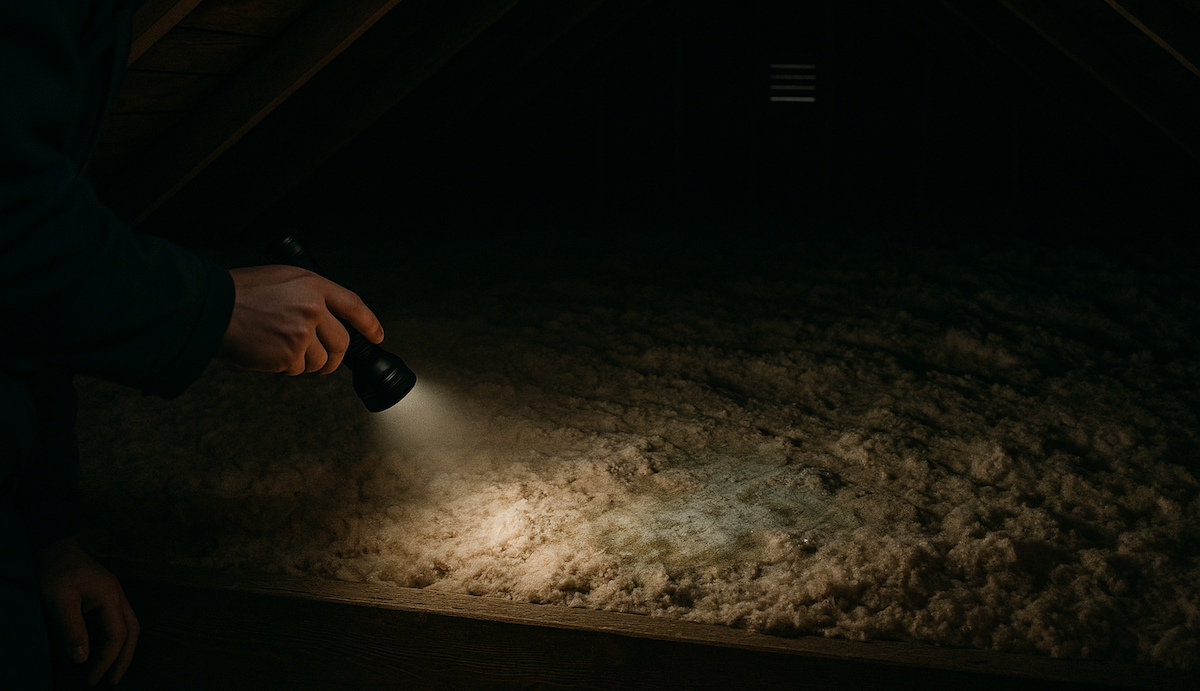Why Is Air Sealing Important?

Most people think insulation is the whole game when it comes to making a home energy-efficient. It’s a big part, sure—but if your house is leaking air like a drafty old barn, insulation alone isn’t going to cut it. That’s where air sealing comes in.
Think of insulation like a warm winter coat. Now imagine that coat has the zipper wide open and the wind’s whipping through. Not so cozy, right? Air sealing is the zipper. It keeps the conditioned air inside where it belongs—and the outside air out.
What Is Air Sealing?
Air sealing is the process of closing gaps and cracks in a building’s envelope to prevent unwanted air leakage. It improves energy efficiency, reduces heating and cooling costs, and enhances indoor air quality by controlling airflow between the inside and outside.
If you’ve ever walked into a room and it feels 10 degrees colder than the rest of the house, chances are you’ve got air leaks. Same goes for musty smells, moisture problems, or wild swings in your heating and cooling bills.
Why Air Sealing Matters
💸 Lower Energy Bills
Air leaks are one of the biggest causes of energy loss in the average home. Heated or cooled air escapes through those gaps, and your HVAC system has to work harder (and burn more money) to keep up. Air sealing can cut heating and cooling costs by up to 20% in some homes.
Want to understand how heat actually escapes your house? Check out our blog on How Does My Home Lose or Gain Heat?
🌡️ More Consistent Temperatures
Ever notice that one room is always too hot in the summer or freezing in the winter? Air leaks are usually to blame. When you seal those gaps, airflow becomes controlled and consistent—no more temperature rollercoasters from room to room.
It’s especially important in the attic—one of the biggest culprits for leaks.
Our blog on blown-in insulation can help you identify the right insulation for your attic.
💧 Moisture Control
Air leaks don’t just move air—they move moisture. In the winter, warm indoor air rises and escapes through cracks in the attic. That moisture-laden air hits cold surfaces and condenses, which can lead to mold, mildew, and rot. Air sealing helps keep moisture where it belongs—and keeps your home healthier.
🧊 Works Hand-in-Hand with Insulation
Insulation slows down the transfer of heat, but it can’t stop moving air. That’s why insulation without air sealing is like buying an expensive cooler with the lid cracked open. You need both.
If your home feels drafty or your bills are creeping up, it could be a sign your insulation isn’t pulling its weight either. Here’s How to Tell If Your Home Is Under-Insulated
What’s the Air Sealing Process Actually Like?
Glad you asked.
Before we blow in any cellulose, we suit up and hunt down the leaks. Because once you’ve got 14 inches of fluffy insulation in the attic, going back to plug those gaps is like diving into a ball pit with a caulk gun—only sweatier and way less fun. Unless you enjoy spelunking through cellulose, seal it first.
🔧 What We Use
Our go-to is polyurethane insulating foam applied with a standard foam gun. It expands to fill cracks, cures fast, and sticks like a champ. Around wiring, pipes, light fixtures, and top plates? That’s where it shines.
And in basements—especially along the sill plate—we break out the big guns: rodent-resistant foam. This stuff is dense, durable, and keeps out everything from cold drafts to overly curious critters.
🔍 Where We Look
🏠 In the Attic:
- Gaps between drywall and top plates (where your ceiling meets the walls)
- Around recessed lights and old light fixtures
- Plumbing stacks and vent penetrations
- HVAC ductwork exits
- Chimney chases and flue cutouts
- Attic hatches and pull-down stairs (huge culprits for drafts)
🧊 In the Basement or Crawlspace:
- Along the perimeter sill plate and rim joists
- Gaps where concrete meets wood framing
- Around plumbing, electrical, and dryer vent exits in the basement
- Unsealed crawlspace access points
🧱 Inside Walls (Especially in Older Homes):
- Behind electrical outlets and switch boxes
- Uninsulated wall cavities (common in pre-1980s construction)
- Openings around windows and door frames
- Balloon framing or open chaseways that connect floor levels
🚗 In Attached Garages:
- Shared walls between the garage and the house (often under-insulated)
- Ceilings below bedrooms or living areas
- Gaps where HVAC, water lines, or electrical runs into the home
- Drafty garage-to-house entry doors
These are the usual suspects. Seal them up and you’re halfway to a tighter, more efficient home.
Ready to Seal Up Your Home?
At Nealon Insulation, we don’t just stuff walls with insulation and call it a day. We take a full-building approach, starting with air sealing the key trouble spots. It’s one of the best bang-for-your-buck upgrades you can make to improve comfort, cut energy bills, and keep your home protected year-round.
👉 Contact Nealon Insulation to schedule an energy assessment and see where your home is leaking energy. We’ll get you zipped up tight.
P.s. We do all types of insulation
Related Articles
Let's Work Together
Ready to transform your home into an energy-efficient haven? Schedule your free energy assessment today and experience the Nealon difference for yourself.



